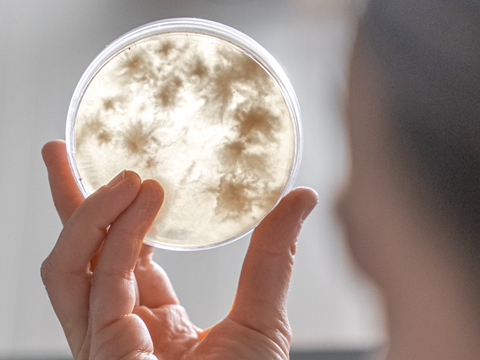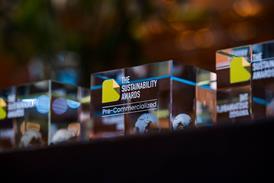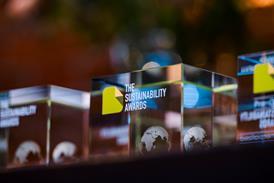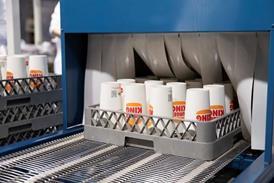
Packaging materials derived from mycelium are on the rise, but what does the manufacturing process look like? We delve deeper into the production of Myco’s protective mycelium and cardboard composite materials to learn more.
Earlier this year, we reported on the company’s mycelium-based alternative to polystyrene. It comes in the form of Myco FixPack, or shaped fixation moulds for protection products in transit; as well as Myco 4Pack and Myco SafePads, which involve filling paper capsules with its Myco material.
To produce the composite, Myco derives an organic substrate from byproducts of the agricultural and wood industries – for example, sawdust, wood or hemp shavings, and paper. Sourcing raw materials from local waste is anticipated to reduce dependence on primary sources, instead making use of materials that would otherwise go to waste.
Each of these byproducts contain lignin and cellulose, which serve as a filler and nutrient source for the mycelium. In turn, mycelium serves as a natural, self-growing binder, and it is cultivated to grow through the organic substrate. This process occurs at room temperature, which is thought to keep energy consumption at a minimum.
The result is described as a ‘strong and lightweight fibrous network’, said to achieve such mechanical properties as shock absorbency. Additionally, the material is considered biodegradable and compostable at end-of-life.
Originally, Myco’s batch method involved steaming the substrate for several hours; yet this was considered inefficient, both in terms of time and energy. It also limited the flow and overall capacity of the production process, the company says.
By introducing a continuous sterilization line, it claims to have lowered the sterilization time from hours to minutes, thus reducing energy consumption while boosting production capacity. The process is reportedly free from harmful chemicals, since it uses heat to sterilize the substrate.
At the same time, Myco has introduced an automated mycelium inoculation technology to replace the manual process, which risks contamination and uneven growth. The automated process is said to unlock precision and consistency when dosing mycelium into the substrate, apparently lowering the overall maturation time by up to 50%.
“We have developed a continuous line for material sterilization that is more efficient than conventional solutions,” the company explains on its website. “The forming process takes units of seconds, competitors need the product to be in shape for units of days. We have developed a unique single-purpose machine that speeds up the worker’s work by 5 to 8 times.”
Other reported environmental benefits of the process include its carbon footprint. Apparently, the fixation of biogenic carbon in the resultant material adds up to approximately -1.35kg of CO2 per 1kg of material – in other words, the emissions in the cradle-to-gate cycle are negative.
Myco compares this to the production of 1kg of polystyrene, which is said to emit around 3.68kg of CO2.
Through this process, Myco aims to mass-produce a ‘plastic-free’ alternative to polystyrene, aligning with sustainability legislation like the Packaging and Packaging Waste Regulation. Transitioning into automation is hoped to drive industrial efficiency, scalability, and commercial success, and Myco reports that it has completed its first orders on the German market.
Another mycelium-based packaging solution came to light in March, with researchers at the University of Washington mixing mycelium, mushroom spores, and coffee grounds to 3D-print an alternative material to polystyrene dunnage. Its density is compared to cardboard or charcoal, but it is said to unlock strength, durability, and end-of-life compostability.
If you liked this story, you might also enjoy:
The ultimate guide to the Packaging and Packaging Waste Regulation in 2025
How are the top brands progressing on packaging sustainability?
Everything you need to know about global packaging sustainability regulation in 2025
The key to increasing the use of reusable packaging in supermarkets












No comments yet